Parallel Paths of Nintendo, Marvel Comics and the WWE.
By CLinendoll 6 Comments
Thought I'd share a post I recently at : http://www.knowngriefers.com/2012/05/parallel-paths-how-nintendo-marvel.html
If there are three nerdier topics for this essay, I’d like to see them. Videogames, pro wrestling, and comic books all played a huge part in my childhood, and continue to entertain me to this day. That’s not to say there haven’t been very serious ups-and-downs in my fandom over the past 25 years. All of these products have experienced incredible highs, and dismal failures in their recent history. What you may not realize is just how similar of paths they’ve all taken to their current success. It seems almost cosmic in a way, as if God Himself is a giant friggin’ dork.
In the mid 1980s, the world was given a wondrous gift: yours truly. Being born in 1985 allowed me to partake in one of the golden eras of popular culture. Everything awesome about the 80s happened in the latter part of the decade, and the early 90s were basically a 80s hangover. Saturday morning cartoons, fashion, and pop music were all neon and sugar, and I happily danced my childhood away with Hammer pants, lines in the side of my hair, and Color Me Badd cassette tapes. Yes, this was truly a magical time to be alive.
That being said, the WWE (then known as the WWF) was exploding into the national spotlight. Hulk Hogan signed on with Vince McMahon’s Connecticut-based promotion, and was pushed into popular culture at an incredibly brisk pace. After appearing in movies, TV shows, and cartoons, the Hulkster was everywhere. Everyone recognized his trademark yellow and red bandana, and his signature blond handlebar mustache. The WWE was a very kid-friendly product in these days, and Hogan encouraged kids to say their prayers, eat their vitamins, and listen to their parents. Like I said, this was pure fluff they were pushing.
At the same time, Nintendo released the NES in 1985, and brought the videogame market back from the brink of collapse. Mario became an icon, and soon his face was plastered on backpacks, clothes, toys, and whatever else Nintendo could slap him on. Nintendo’s runaway success came on the backs on Mario, Legend of Zelda, Metroid, and other franchises that they would go on to stick with for many, many years. The NES was in every home with a child in the 1980s, eventually selling 62 million units. Chances are, if you were growing up in this decade, you had Nintendo’s little grey box in your house.
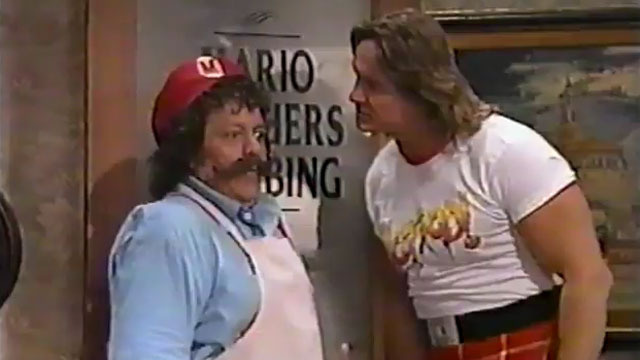 |
| A glorious crossroads of 80s childhood. |
Comic books were also gaining momentum, after decades of stagnation due to the strictly enforced Comics Code, brought upon by a McCarthy-like witch-hunt of the 1950s. The relaxing of the Code, along with the infusion on new, younger talent, meant comics were expanding at a rapid rate in the 80s. Independent artists like Dave Sims created Cerebus, while Kevin Eastman and Peter Laird birthed the Teenage Mutant Ninja Turtles. Major publishers like DC and Marvel also saw major boosts in critical and commercial success, with hits like Frank Miller’s The Dark Knight Returns, and Todd McFarlane’s earth-shattering run on The Amazing Spider-Man.
Charging into the 1990s, all three of these cultural forces had a head full of steam behind them. Riding high on the backs of their rising successes of the 80s, expansion was on everyone’s minds. Nintendo released the Super Nintendo in the summer of 1991, much to the delight of children everywhere. Released years after the Sega Genesis, the SNES’s pack-in game was the masterful Super Mario World. The colorful graphics, jaunty soundtrack, and sublime gameplay all came together to usher in a new era in gaming.
Propelled by the success of the Game Boy and the SNES, Nintendo was on top of the world. A key ingredient to the success of Nintendo’s consoles was the continued cooperation and promotion of third party titles. Mega Man, Final Fantasy, and Street Fighter all saw enormous sales on the SNES, in addition to Nintendo-owned properties such as Mario, Donkey Kong Country, and Star Fox.
Similarly bolstered by their success, the WWF saw major new stars emerge in the early 1990s. Shawn Michaels, Razor Ramon, and Bret Hart soon gained more and more screen time, eventually leading to more exposure than Hogan was receiving. In 1993, the WWF saw two major changes occur: Monday Night Raw premiered on USA, and Hulk Hogan left the company. Both of these occurrences would have major repercussions in the future.
Hogan signed with Ted Turner’s WCW promotion, a Southern-based company generally seen as the minor leagues. The arrival of Hogan signaled a sea change in the wrestling world, brought upon somewhat due to Vince McMahon’s self-assured attitude. Feeling that the WWF would continue to grow without Hogan, McMahon came to feel that no one was bigger than his company, and numerous disgruntled talents would soon follow Hogan to WCW.
This feeling of discontent and resentment could also be felt at Marvel Comics. Artists and writers such as Todd McFarlane, Erik Larsen, Whilce Portacio, and Rob Liefeld were creating top-selling titles and characters, while working for standard freelance wages. Feeling that their work was being exploited by merchandising, without proper restitution, a group of eight creators left Marvel. According to reports, Marvel’s shares fell sharply upon public release of this news.
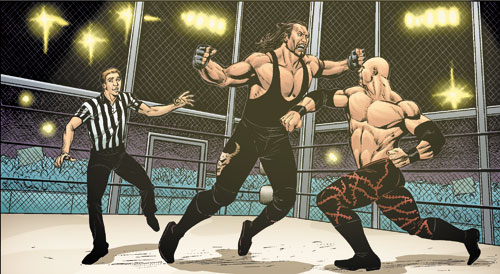 |
| WWE comics. Not by Marvel, but still... |
These eight talents formed Image Comics, which launched massive successes such as Spawn, Savage Dragon, and WildC.A.T.s. These titles sold millions of copies, and were soon sold on the collectors market for hundreds of times their retail price. Each of the Image founders found immediate financial success after the launch of their own imprint, and creators like Jeff Smith (Bone) and Dale Keown (The Hulk) soon signed on.
The good times could not last.
Similarly blinded by their own success, Nintendo backed out of an agreement with Sony to produce a CD-ROM add-on for the SNES. Planned to be announced at the 1991 CES, the Play Station was to be a Sony-branded game console, capable of playing both standard SNES carts, and disk-based game. However, Nintendo found the terms of their contract with Sony to be unsatisfactory to their business plan. Rather than terminating the contract outright, Nintendo contracted Philips to produce a SNES CD-ROM peripheral. This would eventually turn into the stillborn CD-i.
Sony found the betrayal by Nintendo to be just the fuel they needed to launch their own gaming console. The PlayStation launched in America in 1995, and went on the sell over 100 million units worldwide. Handily winning this era of the “console wars,” the PlayStation outsold Nintendo’s Nintendo 64 console nearly 4 to 1. This was the first time in the modern era Nintendo was ever number two, and was the beginning of the end for Nintendo’s dominance in the hardware market.
Meanwhile, the explosion of pro wrestling’s popularity in the mid to late 90s would prove to be disastrous to the industry. Bolstered by their success, WCW began spending more money than they were earning, and allowed egos to run rampant backstage. Mid-tier performers left the company in droves, and WCW soon found itself insolvent. Following the AOL/Time Warner merger in 2001, WCW was put up for sale. In a move that shocked fans, Vince McMahon bought the rights to all WCW’s performers and video libraries for a paltry sum of $4 million.
 |
| 4 of these bought WCW. |
Coupled with the collapse of ECW, the Philadelphia-based promotion run by Paul Heyman, in the same timeframe, the WWE found itself as the only game in town. Without competition, the WWE became over-crowded, and main event stars such as Triple H and The Undertaker did their best to bury, on-screen and off, all newcomers to the company. The mid 2000s were a low point in many ways for the WWE, and the company lost a sizable chunk of their viewership. TV ratings, which were routinely in the 6.0 range in the latter half of the 90s, fell to nearly half that. The transition from TV-14 to TV-PG content also caused a fair amount of fans to tune out.
Marvel Comics found itself in a similar state. After the exodus of the Image founders, Marvel soon began a series of startlingly bad storyline decisions. The infamous Spider-Man Clone Saga caused loyal fans to drop the books, seemingly for years at a time. Multi-title crossovers ran rampant, and gimmick covers caused the collectors market to burst. Coupled with failed business ventures, such as a Times Square theme restaurant, Marvel filed for bankruptcy.
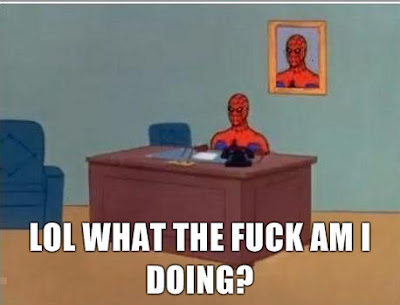 |
| Not running your company well, Spider-Man. |
It took years for the comic giant to emerge from their failures, eventually relying on toy manufacturer Toy Biz to bail them out. It wasn’t until Marvel’s film division took off; starting with 2001’s Spider-Man that things began to look bright for Marvel’s future. Bolstered by their success in Hollywood, the comics themselves found new audiences. New imprints such as Marvel Knights and MAX lured in an older, more mature audience, and a new crop of creators brought new life to the iconic characters.
Recently, all three of our subjects have been mounting comebacks of sorts. Disney purchased Marvel Comics in 2009, ushering in a new era of merchandising and television exposure. Just this past month, The Avengers launched to record-breaking numbers at the box office, and an all-new Spider-Man movie series is starting this summer.
Nintendo plans to launch their new hardware platform, the WiiU by the end of 2012. Following the mainstream appeal of the original Wii, the WiiU looks to introduce gamers to a new way of playing games, coming with a unique tablet-like controller. Franchises like Mario, Zelda, and Metroid continue to appeal to audiences new and old, and there’s little doubt that they will appear in major titles on the WiiU. Despite heavy losses for fiscal year 2011, Nintendo looks to turn their fortunes around in 2012.
The WWE has similarly made a big splash in the new year. In the summer of 2011, fan-favorite CM Punk launched into a non-scripted “shoot” promo in which he railed against the “good old boy” structure of the WWE. Punk took performers like John Cena and The Rock to task for being boring, and unfairly favored by the McMahon family. Fans loved this 4th wall breaking speech, as Punk expressed feelings some fans had for years about the WWE product.
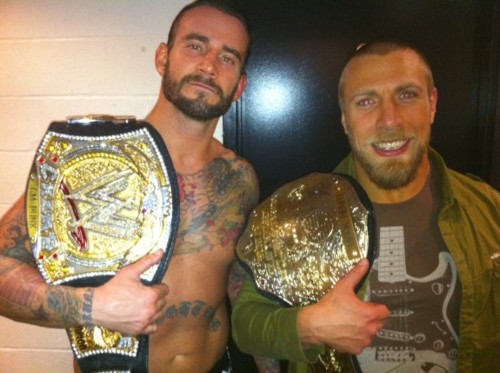 |
| One's a vegan, one's straight edge. Both have beards. |
This, in turn, led to CM Punk merchandise flying out the door. Being the businessman he is, Vince McMahon took this as a sign to put the WWE Championship on CM Punk. With his newfound fanbase, Punk has continued to hold the belt for months. In another surprising move, Punk’s good friend Daniel Bryan was awarded the other heavyweight belt in the company, leading to a strange case of two scrawny, bearded, “indie” workers becoming the faces of the WWE. Suddenly, the overly-tanned, muscular superheroes like Hulk Hogan and Leg Luger gave way to a vegan and a straight edge punk rocker. Fans, especially on the Internet have embraced this new era of pro wrestling, and hope it signals a bright future ahead.
In a few short years, it will be all too obvious how these industries have handled their new endeavors. However, for the time being, this is going to be one hell of a time. For the most part, it seems like things are on an upswing, and I'm hoping the trend continues for all three companies. Pop culture wouldn't be the same without them, and I personally would be much less entertained. I might even have to find some new hobbies, and even do something outdoors. Gross.
Christopher Linendoll can feel his Spider-Sense tingling. He can be reached via Twitter, or found in the hummus section of your local grocery store.
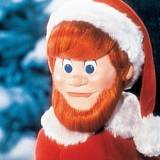
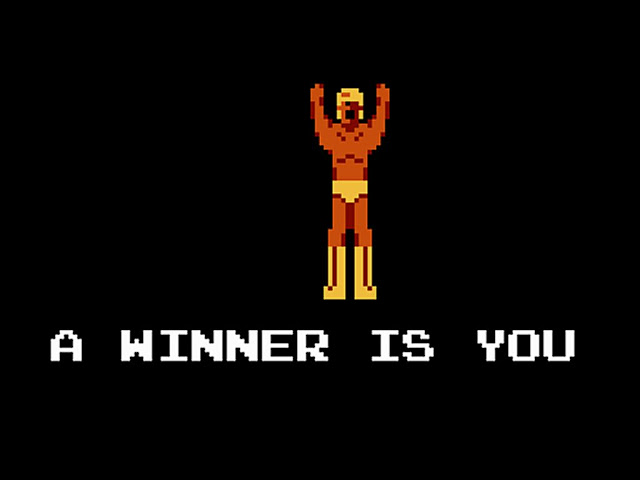

7 Comments